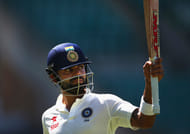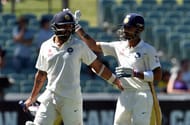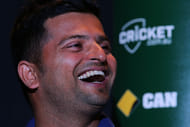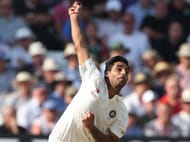It has been an extravagant exhibition of Test cricket - one that tempted ardent fans to immolate sleep and stay up watching what ‘other people’ think is a dragged, bland and boring form of cricket.India and Australia bared their fangs and fought head to head in this series, with both teams comprising of a largely inexperienced line-up. A barrage of runs were scored, lots of on-field banter was witnessed and surging, unbreakable intensity was observed. Everyone was playing to prove something, cement a spot and bring glory as Test cricket, once again, reigned supreme as the most beautiful form of cricket.Team India walked into this series amidst lots of conjectures, all built up from their shambolic disappearance from competitive cricket in England after the Lords’ victory. As a fan in attendance at The Oval on the day they collapsed, I could say that it was a despondent environment, one where even English fans were disappointed at the lack of competition. Spectators went home unhappy, fans were riled up and Indian cricket was in a disarray. India did well to rid themselves of that baggage and allowed themselves to really soak in the Australian environment. They seemed more prepared, more driven and much bolder. The end result may be 2-0, but Ravi Shastri’s golden ‘scoreline doesn’t matter’ phrase really applies, for India should look to emulate the positive cricket they played. Here are some major positives and negatives India can take from the series:
#1 Positive: Virat Kohli\'s Transformative Test Series

Virat Kohli is not unfamiliar with scoring runs and tons. He has done so with massive ease in ODIs, yet his performances in Tests were always under the probing scanner. The 26-year-old came to Australia after a disastrous English season, where he had scored 134 runs in 5 matches. He covered up by scoring a ton in his first innings itself, showing no regard for the extra pressure of captaining the team for the first time.
The ease with which Kohli dominated the opposition and the same display of hunger for runs and wins that he has shown in ODIs mean that Indian fans can now calm their raging critics. In Kohli, we finally have a batsman we can always rely on in all the three formats of the sport, and that is a legend-making material.
A bigger positive for India, however, has been the birth of Kohli’s permanent captaincy stint. His batting, if possible, seems even more determined now, and he prefers to embody the aggressive captain role, which stands in stark contrast to India’s previous (and highly successful) captain in MS Dhoni. This aggressive approach should be encouraged, for such tactics bring results in Test cricket, thereby making them more interesting. Sometimes, it’s better to lose while trying to win rather than play it safe.
The confidence that he has gained will only enhance his cricket, and I sincerely hope he uses it to score a few tons on green pitches to finally shut up those naysayers who refuse to acknowledge his numerous achievements.
#2 Positive: Top Order Batting

The Indian top order adapted well to the Australian conditions and was the main reason why India were always in the game. Apart from scoring a large portion of all the runs, the good starts always meant that India never succumbed to the pressures of trailing behind the home team’s massive targets. Enough has been said about Kohli, but Murali Vijay also had an absolutely fantastic series. His unflappable temperament at leaving good balls and selective bouts of aggression were enthralling to watch.
Shikhar Dhawan and Cheteshwar Pujara were in no ways terrible, each getting starts in most innings and, at times, falling victim to unplayable deliveries and unchangeable umpiring faults. Rohit Sharma seemed to prefer the top order, playing much more fluently than he did lower down; while it is too soon to say anything about KL Rahul, he did make a maiden ton after being promoted up.
#3 Negative: Middle Order

The middle order, on the other hand, was terrible. The few collapses in this series were all triggered by the lower order failing to make an impact, and this is one area India should focus on. A lot of people were criticising the bowlers for not scoring as many runs as Mitchell Johnson or Ryan Harris, but I find those accusations a bit unfounded. That’s not their job, and anything they score should be viewed as a bonus and not a responsibility.
The blame, instead, should lie with the middle order batsmen: Apart from Ajinkya Rahane, no one really stood out. Rohit Sharma didn’t seem very effective, Wriddhiman Saha still needs a bit of work, MS Dhoni didn’t score anything substantial and Suresh Raina, well, will do well to concentrate only on the shorter formats given the way he has batted in Test cricket so far.
Since Rohit seems to perform better higher up, it wouldn’t hurt to experiment with a batsman who clearly belongs in the team more than Raina. It would be interesting to see how Pujara or Dhawan fare in the middle order, and if even one of them gets comfortable in that spot, it can mean only good news for India.
#4 Negative: Bowling

And finally, the elephant.
The massive problem with the Indian bowling, as it has been for a long time now, is that there aren’t many alternatives. Quite unlike the batting situation, we don’t have many budding bowlers making strong claims for a spot. For ages, new Indian bowlers have learnt the hard way, and by the time they get enough experience, a slump in form or an injury usually pushes them out of the team.
Bowlers like Zaheer Khan, Harbhajan Singh, Praveen Kumar, Irfan Pathan have all fallen victim. They aren’t helped by India’s recent craze for infusing young blood in line-ups, with legends not getting a second glance despite many newcomers failing to make a mark.
Ravichandran Ashwin should be a permanent spot in the team, no matter the bowling conditions. He is a good bowler, and India’s only threatening spinner. It’s important to have balance in your bowling attack, and Ashwin provides some relief amidst the brutality dished upon the seamers. Sure, he has his bad days like many others, but he has shown a tendency to embrace it and come back better. His batting skills should further excite India into moulding him into a true all-rounder.
Bhuvneshwar Kumar should also be supported in these times, for he has been the only spotlight among Indian seamers for a long while. It isn’t easy coming back from an injury and leading a pace attack, and with the right amount of support, we can avoid what happened to Irfan Pathan.
Ishant Sharma, as always, bowled much better than his statistics would show. Mohammed Shami can be a great Test bowler with the right discipline, but unfortunately, Umesh Yadav doesn’t look like he belongs here. Varun Aaron seemed in the same league as Umesh, but he brings the exciting prospect of pace, which Indian fans aren’t accustomed to.
Brand-new app in a brand-new avatar! Download CricRocket for fast cricket scores, rocket flicks, super notifications and much more! 🚀☄️
